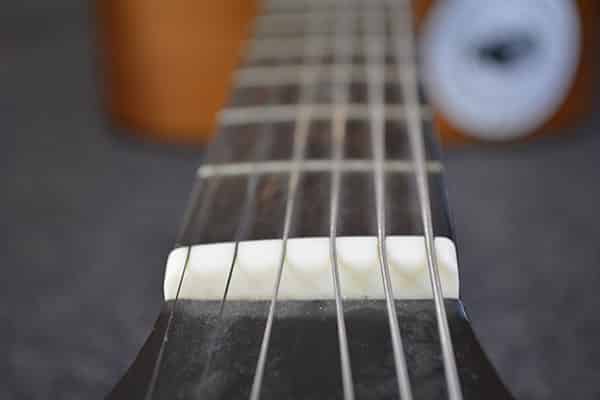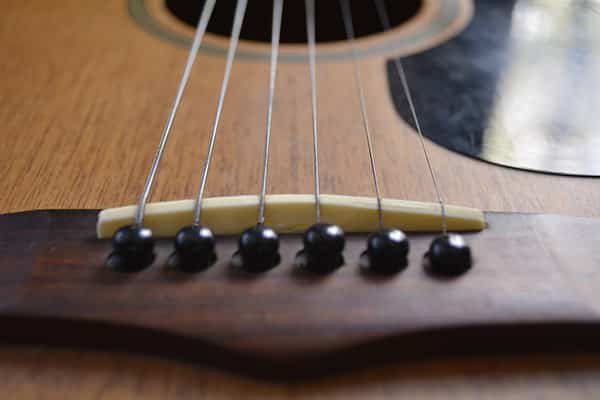This is a question often asked by beginner guitar players when starting to learn the guitar and one that I asked myself. So I researched how often I should be the tuning the guitar and here is what I found.
How often do you need to tune a guitar? You should tune your guitar every time you play. When you first start to learn, your intonation will be poor and tuning with a guitar tuner will help ensure accuracy. Over time ‘your ear’ will improve and you will begin to understand how each string should sound.
Many new guitar players aren’t sure when to re-tune their guitar and there are actually a number of variables that can affect how often we need to do it.
Humidity, temperature, type of playing style, type of guitar, smashing it on the floor, to name a few, can all play a part in how a guitar can fall out of tune.
Tune The Guitar every time You Play
Apparently, if you want to get good at anything, blaming your tools is perfectly acceptable, who knew? So when you start learning you should take the time to tune your guitar each and every time you play. This way you have no excuses and get to hear every bum note you play, wonderful.
The easiest way I have found to do this is by using a guitar tuning app like this free one that comes with Musopia from Justinguitar, you play each string and it tells you if it is high or low. You can then twist a few pegs (tuning pegs) and you’ll be all clear to play again, just like life! Make a few adjustments along the way and it can all be rosy.
Here is how those variables previously mentioned, plus more, can affect that killer guitar style you don’t have yet:
Guitar Variables
Playing Style
Plucking hard, often a way I describe how it is learning to play the guitar, is a style of play favored by folk and classical music lovers. It is also one that can detune a guitar quicker than plain old strumming.
Type of Guitar
Previously mentioned but if you play a solid wood guitar it will keep its tune longer than a veneer guitar.
Strings
Old strings lose their elasticity, much like a person’s face does, we then tighten them up or down to tune them but over time they get worse. Until eventually your face ends up looking like an alien took over it, like Men In Black.
New Strings have to be stretched out and take time to bed in, so there may be more tuning adjustments to be made in the early stages.
How they are strung – Strings should only be wrapped around the pegs twice.
Pressing too hard – If you press too hard on the fretboard you can actually play out of tune.
Nuts and Saddles
No I’m not talking about Gauchos and the chafing that comes with riding a horse all day. I’m actually talking about these two parts of the guitar:


Often the strings can get caught in these two areas (So kind of like chaffing then, hmm) so what you need is a good dollop of Big Bends Nut Sauce (click here to check price at Amazon), a tuning lubricant for stringed instruments that can keep things smooth and ready.
Tuning Pegs
Make sure these are well screwed to the head of the guitar. Vintage people and guitars tend to have a few screws loose, it comes with the territory, so check these are tight and if you still have problems you may need to replace them, the pegs, not the people.
Intonation
This is ‘Pitch accuracy’, it is to do with the guitar being in tune along the fretboard and is not something recommend for beginners to be fiddling with, if you suspect an issue, then maybe talk to a local guitar expert or a luthier (a maker of stringed instruments). You can do it yourself but when you first start learning you want to be concentrating on playing not maintaining an instrument to this degree.
Necks
These can become warped or loose if the guitar has not been looked after and kept out of conditions that could severely affect it like extremes of temperature.
Guitar Straps
Some people tie their straps on with a
External Variables
Humidity
If your only source of peace (from your loving family) is inside a sauna then you will be tuning your guitar more times than I get to change my newborn’s diapers. The amount of water in the air can rust strings, anything over 75% humidity will do this quickly. Generally, 45 – 50% humidity will keep them in better shape. If you happen to have a Controlled Humidity Chamber you’re all set and will have less tuning to do, we all have them right? No? How do you even get by in life? Don’t worry there is a cheaper option, see below for a recommended Guitar Humidifier.
Temperature
I live in the South Island of New Zealand and from time to time we experience 4 seasons in one day. The good news is that with global warming this might drop to 3 but until then the variance in temperature will play an even greater part in detuning my guitar. Keeping the guitar out of sunlight and extremes of temperature is obviously the way to go. If you have a cheaper guitar (particularly acoustic or classical) that isn’t made from solid wood it will likely be affected more by temperature.
Build up of dirt on the strings
From your fingers, your toddler’s nose, the
Acidic fingers
People with high acidity emit this through their skin and so when they play the guitar the strings dissolve within minutes. Erm no not quite but this is something that exists and can damage your strings even overnight, they can rust, corrode and become rough to the touch very quickly. If you have acidic fingers or ‘string killers’ as they can be known then read the article I wrote here about the best ways to deal with this The Best Solutions For Acidic Hands When Playing Guitar
Smashing It On The Floor
Looks cool but appears to have detrimental effects on the sound of the guitar. Not convinced? Link a video in the comments of you smashing your
Store Your Guitar In A Hard Case
I was given an acoustic guitar over 15 years ago which I never really learned to play, it is a cheap one from Indonesia, and for now, this is what I use. It came with a soft case but this hasn’t done much to protect it. One day I will buy a solid top or solid wood guitar, and when I do a hard case will be on the list.
Hard Cases are the way to go because not only do they protect your guitar when knocked over they also stop the inside of guitars becoming storage devices for little dolls, stones, plectrums,
Guitar Humidifier / Dehumidifier
What a hard case also does, is enable you to control the immediate environment around the guitar. As previously mentioned, the perfect humidity levels for storing a guitar are 45 – 50%, but many of us live on earth, so this varies pretty much all the time.
The best way to control this is by keeping your guitar in a hard case and using a two way guitar humidifier, like this one, click here to check the price at Amazon.
Related Questions:
What Method Should I Use To Tune My Guitar When First Learning?
The quickest and easiest method I have found, as a beginner, is using a guitar app that you can download on your phone or tablet. They take seconds to install and are often very intuitive to use. I’d recommend the free one that comes with Musopia from Justinguitar it offers more than just tuning and but is excellent for this purpose.
Are There Quick Ways To Keep Your Guitar In Tune For Longer?
Get your guitar professionally set up when you first buy it whether it is brand new or second hand, this will ensure even a cheap guitar will sound great for a longer period of time. Cost should be somewhere between $50 – $80. You can find out what else is involved in a guitar set up in our article here What Is A Professional Guitar Setup And Why You Need One

